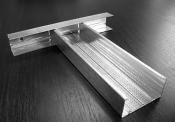Search
Login
Recommended
Membrane water purification, reverse osmosis
The time has come when not clear water flows from our taps. The issue of water treatment is very relevant. Membrane water treatment technologies make it possible to achieve practically pure water, and reverse osmosis is the most effective treatment technology.
Content
Membrane water treatment technologies
At their core, membranes work just like regular filter media.
Passing water through themselves, they are able to retain impurities dissolved in water.
But there is a fundamental difference between membranes and filters.
Membranes have very small pores, so they are able not only to clean water from microorganisms, but also able to remove foreign molecules.
And depending on the size of the pores, the membranes are divided into types of filtration:
- microfiltration;
- ultrafiltration;
- nanofiltration.
Depending on the pore size during microfiltration, the size of the removed molecules is more than one hundred thousand daltons, nanofiltration removes molecules ranging in size from three hundred to one thousand daltons, and reverse osmosis removes molecules from one hundred to three hundred daltons.
Based on this, it is clear that reverse osmosis membranes are the most effective, but rather large molecules pass through them.
But the fact is that there are more subtle cleaning processes at the atomic level.
Well, the working pressure, which is the main driving force of membrane filtration, with reverse osmosis should be from 15 to 70 Bar.
-
But for microfiltration, the pressure can be less than 2 Bar.
-
For ultrafiltration, the pressure should be between 1.5 and 7 bar.
-
Nanofiltration is carried out at a pressure of 3, 5 to 20 bar.
Conclusion: the water pressure of the city water supply is sufficient for micro-, ultra-, nanofiltration. For reverse osmosis, an additional pump is needed.
Although, of course, for some consumers, water purified by nanofiltration is sufficient, since it is purified by 93%.
Water passed through reverse osmosis is purified by 99%.
Reverse osmosis system
Water purification by reverse osmosis is a system consisting of a prefilter, its own membrane, an accumulation tank, a postfilter, a mineralizer, and a structurizer.
Consider all the components of the system.
prefilters
The first blow of the mud is taken by the prefilters. The number of prefilters can be from 1 to 5.
This element plays a large role in the system itself, the life of the entire system directly depends on the quality of the prefilter, because the membrane itself quickly fails under the influence of chemicals and chlorine.
In order not to clog the pores of the membrane, the prefilters must remove the bulk of the dirt.
Conventional cartridge filters are used as prefilters; a carbon filter must be included in their composition.
A carbon filter purifies water from chlorine, and chlorine is the main enemy of polymer membranes.
The most commonly used three prefilters.
-
The first prefilter removes impurities up to 50 microns in size.
-
The second is to remove chlorine from the water.
-
The third filter is a control, it can trap impurities up to 5 microns.
reverse osmosis membrane
Membranes can be tubular and flat.
Thin tubular membranes have a diameter of 0.1 to 0.5 mm, such hollow fibers are the most effective.
Due to the small size of such hollow fibers, their total working surface will be very large.
But such a membrane is capable of frequent contamination, i.e. For good performance of hollow fiber filters, thorough water treatment must be carried out.
Flat membranes are films deposited on a substrate or reinforced.
Reverse osmosis membranes are multilayer.
Each layer carries a specific load.
-
The first layer or substrate is a carrier.
-
The second layer performs filtering.
-
The third layer is protective.
Flat membranes are roll filtration elements, in which membranes are wound onto a drainage tube in the form of a roll.
Roll elements, in density, are located between the tubular and half-fiber membranes.
Roll elements have a convenient geometry, have a small thickness of the working layer, have a high specific productivity and a low tendency to contamination.
storage tank
Since the performance of nanofiltration and reverse osmosis membranes, especially if they work without an additional pump, is small - a storage tank is needed.
If there is no storage tank, you will wait half an hour until the kettle is typed.
The average tank volume for household filters is 8-10 liters.
post filter
This filter is a cartridge filter and it is placed at the outlet of the storage tank.
Of course, after passing through the reverse osmosis membrane, no impurities remain in the water.
But this filter is able to clean the water stagnant in the tank, most often this filter is coal.
mineralizer
Opinions of scientists regarding the use of ideally purified water inside were divided.
Such water is most often tasteless and not everyone likes it.
Considering that minerals in reasonable quantities are useful, manufacturers have added mineralizers to household filtration systems.
Most often, calcium, fluoride and iodine are added.
structurer
According to manufacturers, this element of the reverse osmosis system creates a structure identical to the water that is part of living cells.
The healing effect has not been fully studied, but such systems are already on the market.





